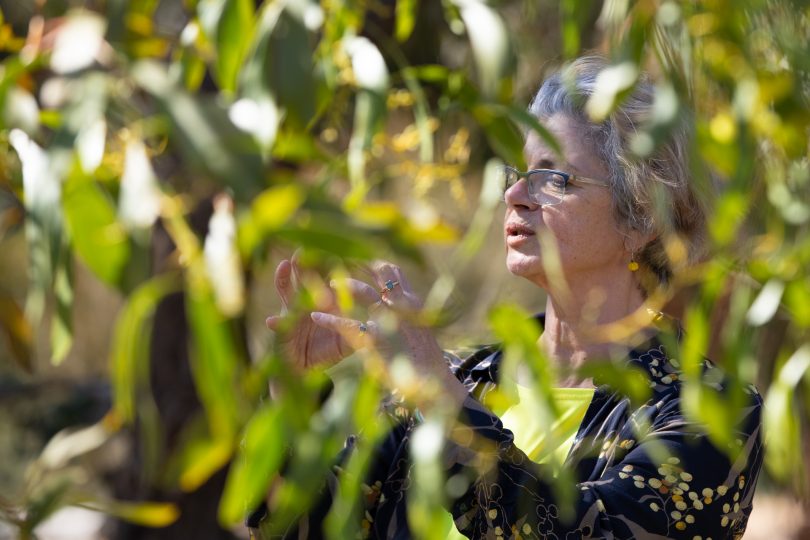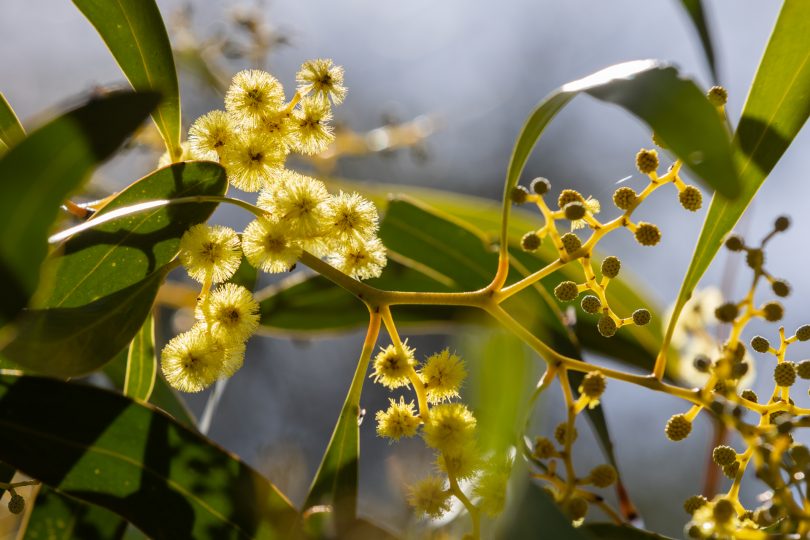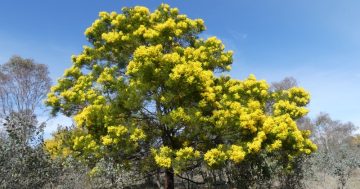
Suzette Searle in her element amongst the golden wattle (Acacia pycnantha) at the National Arboretum. Photos: Michelle Kroll
President of the volunteer Wattle Day Association Suzette Searle has a suggestion to settle the controversy surrounding the date of Australia Day – make it Wattle Day instead.
“Wattle is a unifying symbol that we can all relate to. It’s got no baggage in terms of our politics, ethnicity or religion, or what state or territory we live in. Its diversity reflects us as a nation of Indigenous peoples and colonists, settlers, immigrants and refugees from across the world,” Ms Searle said.
“A wattle in full bloom is a stunning and uniquely Australian display. They flower right at your eye-level with bright, abundant wattle blossoms in every shade of yellow.
“The power of wattle as a national symbol is that it comes from the land itself which has welcomed us all.”
And despite a popular myth, the flower of the acacia plant is not responsible for causing an outbreak of hayfever in spring.
“Wattle flowering is rarely the cause of hayfever as the pollen is too heavy to actually breathe into your lungs,” she said.
While National Wattle Day was the official start of spring on 1 September, Ms Searle said the golden yellow hue of the native plant perfectly frames the heritage of Australia, even though its traditional flowering was two weeks late this year.
As Canberra lit up the National Carillon, Telstra Tower, Questacon and other significant institutions in yellow to herald the day, the Wattle Day Association named Australia’s health and professionals and allied workers the 2020 Golden Wattle Award winners in recognition of their unselfish demonstration care and compassion for their fellow citizens, Ms Searle said.
A sprig of wattle was also given to the ACT’s newest citizens at a citizenship ceremony yesterday (1 September).
Did you make it out last night for the golden walk between the National Carillon ? along Kings Ave Bridge and Bowen…
Posted by National Capital Authority on Monday, August 31, 2020
“Australia is the land of the wattle,” Ms Searle says. “In all its varieties, wattles are everywhere. There are more than a thousand different species growing in the outback and the bush, and along the roads and highways to your back door.”
She said wattle is vital for the salinity of the land and Indigenous Australians have used it as an important signal of the seasons, although records of its traditional uses are difficult to confirm. Preparations from at least 30 of the more than 1200 acacia species in Australia were used by Indigenous Australians for medicinal purposes; however, many species are toxic unless prepared correctly. Australia’s earliest settlers stripped the bark of the plant to use for tanning.
“Wattle has survived and thrived in this country for 35 million years through its ability to adapt,” Ms Searle said, noting how the seed coating needs the slow burn of fire to crack the seed, which is why it is often the first plant to reappear after a fire.

Teah Searle and her aunt Suzette welcome the arrival of wattle in Canberra.
Horticulturist Charles Weston picked specimens of flowering wattle on the slopes of Mt Jerrabomberra in August 1917, the seeds of which have been planted at the National Arboretum.
Weston was also in charge of landscaping Canberra and found the plant to be perfectly suited to below-freezing winters and dry summers. While Weston was initially honoured with the naming of a species Acacia westonii, the reference was removed by botanists who determined golden wattle (Acacia pycnantha) as the official national floral emblem.
There are a number of wattle walks at the National Botanic Gardens, National Arboretum and Mt Taylor this week. You can find out more about this and the wattle on the Wattle Day Association website.
















